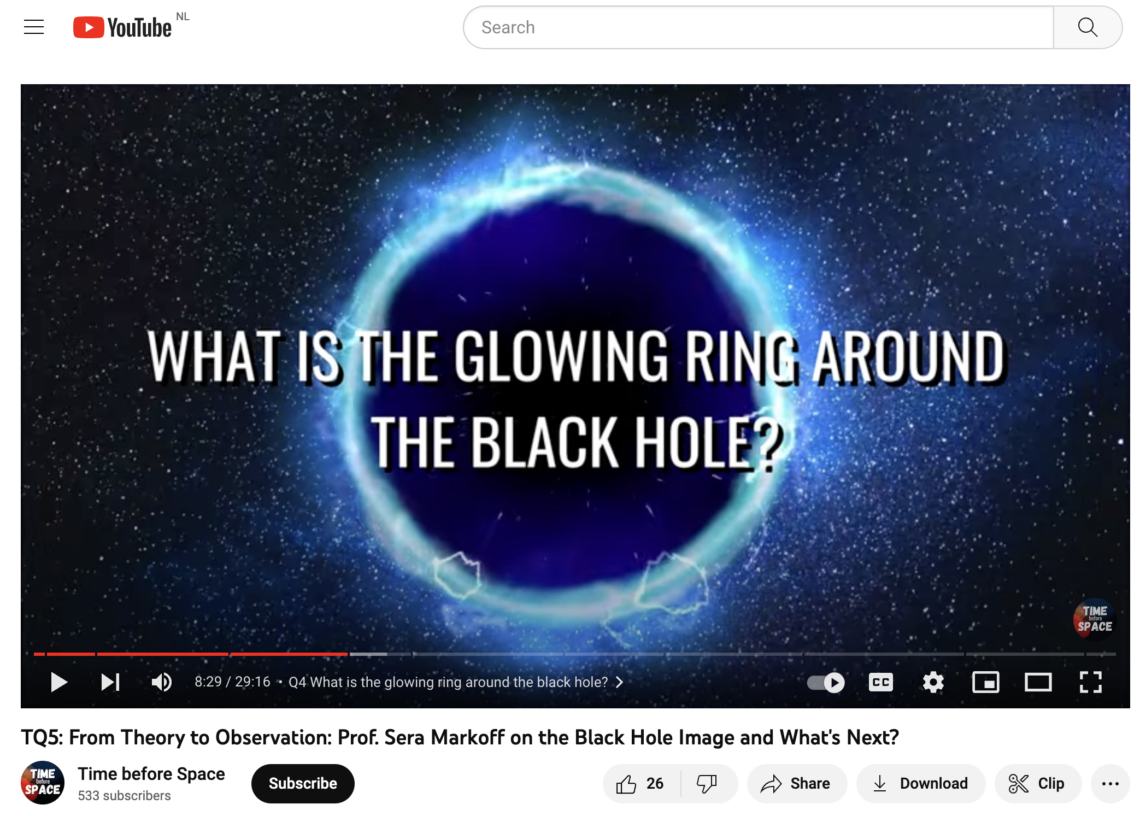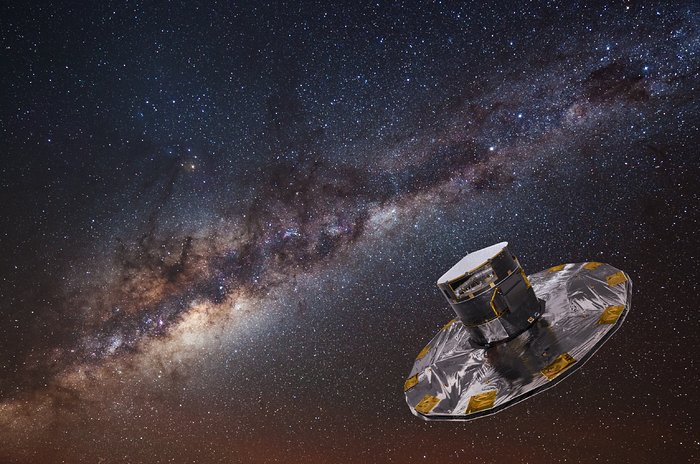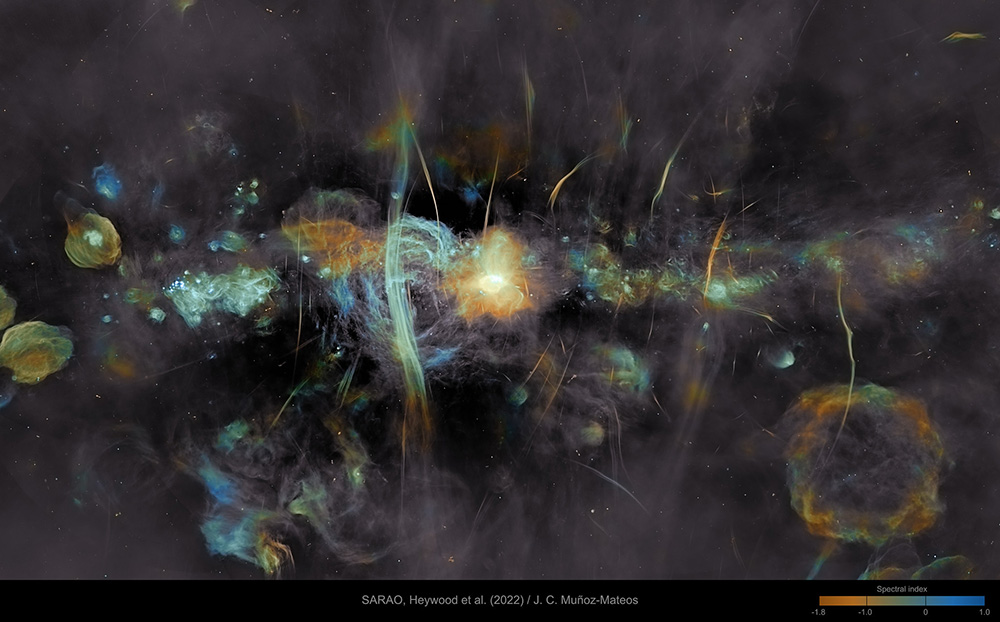As a highly trained professional in a complex field with rare skills, the main question on my mind is “Will I be replaced by a box in the corner ?” To answer this question I decided to put ChatGPT-4 to the test in the common-or-garden field of high-energy astrophysics and, in the interest of fairness, have it test me in its turn ! I can report that my job may be safe(ish), for now. It understood context uncannily well and got the main things right in frightening detail but needed prodding about important areas. When reminded of an omission it acted like it knew all along and filled in the…
Read More >>-
-
Why talking about science to the public makes you a better scientist
Ok I am super tardy with my turn to do our research group’s blog, but there’s always a lot to juggle between running a group at a university, and all the other things I do as a professional scientist. However I do always make time for a significant amount of engagement with the public about science, on many different levels. For instance I am in the 7th year of running a project where a team of volunteers (mostly university students) and me go to a local elementary school in an under-served community near our campus, to give lessons throughout the year about science. I’m often asked not only how I…
Read More >> -
The Secrets of Black Hole Jets
Black holes are some of the most fascinating objects in the universe, known for their immense gravity and mysterious nature. While they are famously known for their ability to swallow everything in their vicinity, including light, black holes can also emit powerful beams of energy called jets. Jets are narrow beams of plasma that shoot out from the proximity of black holes at relativistic speeds, meaning they are close to the speed of light. This week, Nature published a new observation of the supermassive black hole at the center of the M87 galaxy that captured the first image of the jet and the black hole shadow together. See the science…
Read More >> -
From Life to Death
Ever wonder about the lifetime of a star or how black holes form as stellar remnants? When clouds of gas and dust cool and collapse under gravitational forces, they form protostars. Protostars can be seen as the infancy stage of stars because they are still gathering mass from the parent molecular cloud. The masses of these protostars drastically affect the evolution of the star over the course of time. The more massive the star is, the more violent its death is. The less massive, the more likely the star is to become a dwarf (see Figure above). Dwarfs are generally systems with low energetic processes. The three subclasses of dwarfs…
Read More >> -
The forgotten middle child of black holes
Often in these blog posts we talk about two things. At one end of the spectrum, there are supermassive black holes that exist in the centre of galaxies (106 – 1010 M⊙). And at the other, stellar mass black holes (∼ 10 M⊙), which are the endpoints of the evolution of the most massive stars and can be found orbiting another star, forming a black hole X-ray binary (BHXB). But what about the poor forgotten black holes with masses between these two classes? After all, it makes sense to think that, at some point in cosmic time, black holes between 10 and 106 M⊙ had to exist, in order to…
Read More >> -
When Making the Nearest Black Hole, Three May Not Be a Crowd !
As a scientist who works in a black hole research group, I am often stopped on the street and asked “What is the nearest black hole to Earth?” to which I might mumble “Hmmm, oh, hmmm, I’m guessing its perhaps Cygnus X-1 ?”. ( In fact, its not. Cygnus X-1 is simply the first black hole discovered and the one of the brightest sources in X-rays which is why it was noticed in the first place ). Surely it is the intrinsic properties of astrophysical objects that make them scientifically interesting, such as mass, luminosity or the kind of companions they are associated with rather than things which depend on…
Read More >> -
A Wormhole or a Black Hole?
Last year, the Event Horizon Telescope (EHT) presented the observations of Sagittarius A* (Sgr A*), located at the Galactic Center of the Milky Way. Their results confirm the presence of a supermassive black hole at the center of our galaxy (see Fig. 1 or this interview). Such an astrophysical object is expected to be described by the Kerr spacetime, which is a solution of Einstein’s equation for a rotating black hole. Furthermore, they also investigated potential deviations from the Kerr prediction, such as the traversable Morris–Thorne wormhole! See my previous blogpost for more context about wormholes. The visual difference between simulations of the accretion flow from the two spacetime geometries is shown in…
Read More >> -
Self Similarity: the Nature of the Universe?
One thing that has always confused me since I was a bachelor: What is a power law? According to Wikipedia: “In statistics, a power law is a functional relationship between two quantities (y, x), where a relative change in one quantity results in a proportional relative change in the other quantity, independent of the initial size of those quantities: one quantity varies as a power of another.” That is, y = c x –k, where c is a constant and k is the power-law index. Well apparently, it seems that a power law is just a mathematical definition! However, you might feel surprised when I tell you that more than a hundred power-law relationships have been identified in multiple…
Read More >> -
Our black hole, Sagittarius A*
Tune in today (21 June 2022) at 8pm CET as host, Melanie During interviews our PhD student, Wanga Mulaudzi. In this interview, Wanga will tell us about our black hole, Sagittarius A*, and how the Event Horizon Telescope collaboration went about imaging it for the very first time in history! Watch the livestream here https://youtu.be/jWsC8HJ5d4k.
Read More >> -
What is in the Center of our Galaxy?
Last week we received the announcement that on May 12, through press conferences around the world, the Event Horizon Telescope (EHT) will reveal groundbreaking results about the center of our galaxy: the Milky Way. More than a hundred years had to pass since the publication of Albert Einstein’s General Relativity, for us human beings to be able to decipher that mysterious center of our existence, from the point of view not only of the solar system but from a universal vision. But why are we interested in that? And how is it possible to observe something so far away? For many centuries we have wondered about the origin and evolution…
Read More >>



